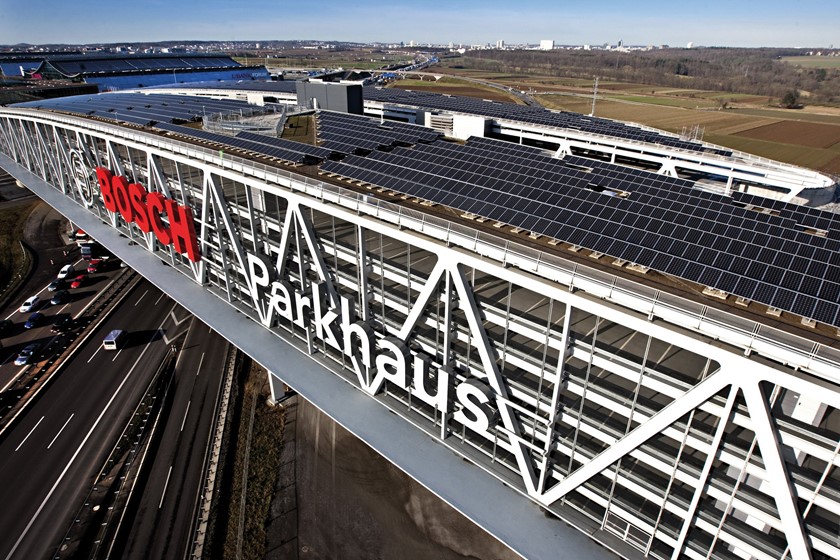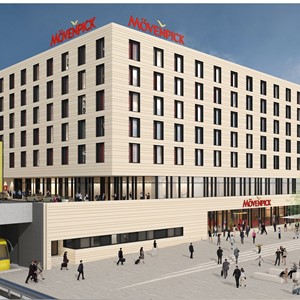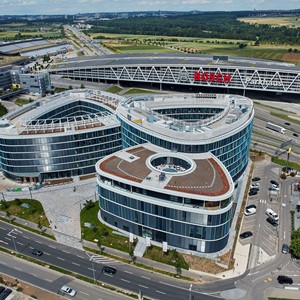
Setting the course for the future.
The new through station of Stuttgart 21 and the new line to Ulm offer many advantages. Three quarters of all Baden Württembergers benefit from the faster connections. And the economic power, so the forecasts, will increase in the whole country.

165 years ago, in June 1850, the first train on the new Filsbahn travelled from Stuttgart via Untertürkheim, Plochingen and Göppingen to Ulm and later on to Friedrichshafen. In the wake of the Swabian railway and the new infrastructure, Württemberg in general and the entire Stuttgart region in particular experienced an enormous economic upswing, the basis for industrialisation was laid. On the new ICE route from Stuttgart to Ulm, the traffic hub at Stuttgart Airport and the through station of Stuttgart 21, similar hopes now rest. The industry associations, interest groups, municipalities and ministries all predict that this time, too, the focus will be on development opportunities for the next hundred years. The effects and changes that the major project will entail will affect very different areas.
Traffic
Numerous municipalities and administrative districts in Baden-Württemberg will in future have better connections to the Stuttgart region and the Fildern with the airport, the trade fair centre and the new Stuttgart Airport City business park than before. The airport will be developed into a traffic hub, which will include a new long-distance railway station, a central bus terminal, an S-Bahn station and a city railway connection. Hundreds of thousands of commuters benefit daily from the shorter journey times, who also have fewer changeovers due to direct connections and have a larger range of trains on offer. According to studies, the expansion of the infrastructure has a direct benefit for three quarters of all citizens of Baden-Württemberg.
Urban development
After the dismantling of the current railway tracks around Stuttgart's main railway station, a 100-hectare area will be vacated in the heart of the city on which a new district is to be built with the participation of the citizens: Rosensteinquartier. An ecological model quarter is planned, which directly adjoins the castle garden and extends the green area. According to an original master plan, 11,000 jobs and living space for 24,000 people could be created on the site. Other cultural facilities planned include a palace garden philharmonic hall, a new building for the Linden Museum, a congress centre and a conference centre. The final concept for the design of the quarter is to be drawn up within the framework of informal citizen participation. From Stuttgart airport, the new quarter in the city centre will be accessible by train in eight minutes.
Economy
There are several forecasts and studies dealing with the measurable consequences and economic evaluations of the transport project. According to these studies, up to 12,000 new jobs could be created in Baden Württemberg as a result of the significant reduction in travel time and the resulting increase in production. In the course of connecting the state to the European high-speed network, economic power is expected to increase by an estimated 500 million euros per year. Among the main beneficiaries are the Stuttgart and Ulm regions. The experts also assume that the number of inhabitants in cities such as Stuttgart and Ulm as well as other municipalities will increase along the new line. On the one hand, this is due to the vacancy of areas such as those in Stuttgart's city centre. In addition, the new jobs will also increase the number of residents, which in turn will have a positive effect on the municipalities' tax revenues.
Ecology
The new rail junction will optimize numerous connections and eliminate the need for previously cumbersome routing and manoeuvring manoeuvres. This is exemplified by the existing connection to Tübingen, which runs the express train via Bad Cannstatt, Esslingen and Plochingen, although it does not stop at these stations. In future, the train will travel directly to Tübingen through the ten-kilometer Filder Tunnel to Stuttgart Airport, where it will thread its way along the existing route. These route optimizations and shorter travel times considerably reduce energy consumption. At the same time, the project will also strengthen environmentally friendly rail freight transport. Today, freight trains, regional trains, ICEs and the TGV run on the 160-year-old Geislinger Steige. The maximum speed on the winding route is 70 kilometres per hour. With Stuttgart 21, all ICE connections, the TGV and a regional connection will be transferred to the new line, which will travel up to 250 kilometers per hour.
This will free up additional capacities for freight traffic.
The Stuttgart-Ulm railway project in figures
The name Stuttgart 21 stands for the reorganisation of the railway junction in the state capital. On a total distance of 57 kilometres, 16 tunnels and 18 bridges will be built in the city area. The heart of the project is the new through station designed by the Düsseldorf architect Christoph Ingenhoven, which will replace the existing terminus station. To this end, the railway is building three further stations: a new station at Stuttgart Airport and the trade fair grounds, the Mittnachtsstrasse S-Bahn station in Stuttgart's city centre and a storage station in Untertürkheim. The project costs will be borne by Deutsche Bahn AG, the federal government (including EU subsidies), the state of Baden-Württemberg, the state capital Stuttgart, Flughafen Stuttgart GmbH and the Verband Region Stuttgart.
New Wendlingen-Ulm line (NBS)
The new Wendlingen-Ulm (NBS) line has a total length of 59.6 kilometres. Around 30 kilometres of this stretch run through a total of five tunnel sections. In addition, 20 road bridges and 17 railway viaducts have to be built along the route, including the Filstal Bridge. The reconstruction of Ulm's main railway station, which is also part of the project, has already been completed and the maximum speed on the new ICE line, which runs parallel to the A8 motorway and across the Swabian Alb, is 250 kilometres per hour.
This might also interest you












